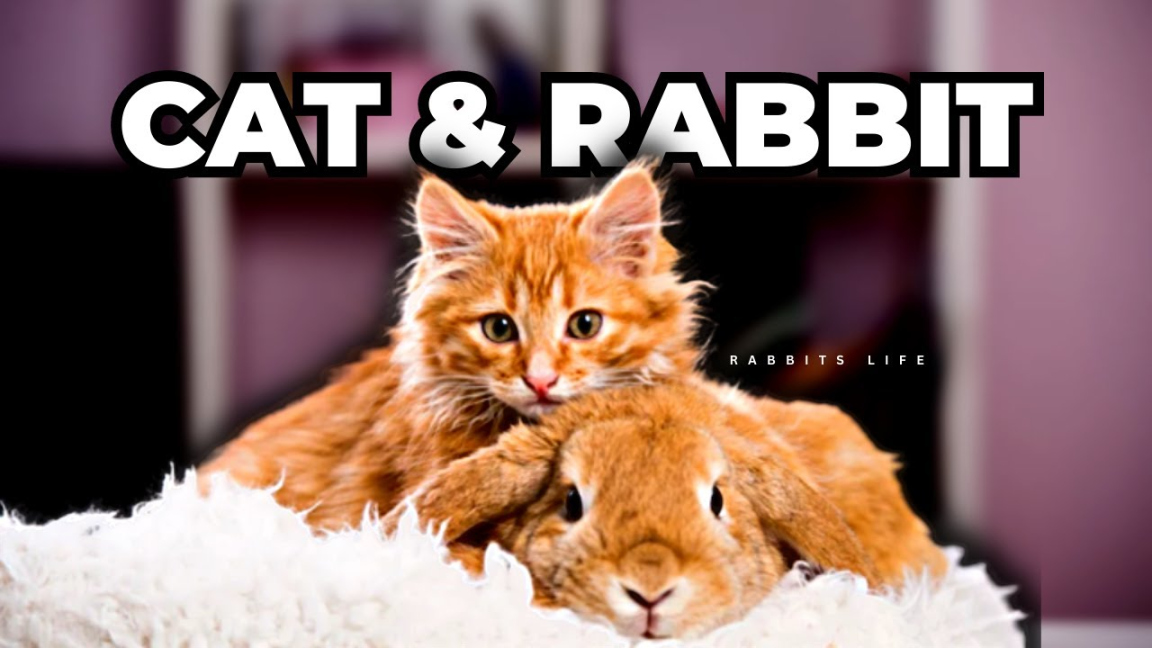How to Introduce a Cat to a Rabbit?
Introducing a cat to a rabbit can be a delicate process, as both animals have different instincts and behaviors. However, with proper preparation and careful introductions, it is possible to create a peaceful and harmonious environment for both pets. Here is a step-by-step guide on how to introduce a cat to a rabbit:

1. Prepare separate spaces
Before bringing your new rabbit home, ensure that you have separate spaces set up for both the cat and the rabbit. This is crucial as it allows each pet to have their own safe haven while they adjust to the new environment. The rabbit should have a spacious hutch or cage, while the cat should have a separate room or area where they can retreat to.
2. Familiarize the pets with each other’s scent
Cats and rabbits rely heavily on their sense of smell to understand their surroundings and communicate. To help them get used to each other’s scent, you can swap bedding or blankets between the cat and rabbit’s areas. This allows them to become familiar with each other’s scent without direct contact.
3. Gradual visual introductions
Once both pets are comfortable with each other’s scent, you can begin gradual visual introductions. This can be done by using a baby gate or a mesh barrier to separate them while allowing them to see each other. Start with short sessions and observe their reactions. If either pet shows signs of stress or aggression, separate them and try again later.
4. Controlled physical introductions
After the initial visual introductions, you can move on to controlled physical introductions. This step involves allowing supervised face-to-face interactions between the cat and the rabbit. Keep the sessions short at first and gradually increase their duration as they become more comfortable with each other. Always closely monitor their behavior and be ready to intervene if necessary.
5. Positive reinforcement and rewards
During the introductions, it is essential to provide positive reinforcement to both pets. Reward them with treats and praise whenever they display calm and non-aggressive behavior. This helps them associate each other’s presence with positive experiences, further facilitating the bonding process.
6. Never force interactions
It is crucial to understand that not all cats and rabbits will become best friends. Some may never fully accept each other’s presence, and that is okay. Never force interactions between the two pets if it is causing stress or aggression. Instead, focus on providing separate spaces and enriching environments for each pet to thrive in.
Frequently Asked Questions (FAQs)
Can all cats and rabbits become friends?
No, not all cats and rabbits will become friends. While some may eventually tolerate each other’s presence, others may never fully accept it. It is important to understand and respect the individual personalities of your pets.
How long does it take for a cat and rabbit to get along?
The time it takes for a cat and rabbit to get along can vary greatly. Some may establish a bond within a few weeks, while others may take months or even longer. Patience and careful introductions are key.
What signs of stress or aggression should I look for?
Signs of stress or aggression in cats can include hissing, growling, raised fur, swatting, or lunging. For rabbits, signs may include thumping their hind legs, growling, lunging, or aggressive posturing. If either pet displays these behaviors, separate them and consult with a professional if needed.
Can I leave a cat and a rabbit alone together?
It is generally not recommended to leave a cat and a rabbit alone together, especially in the early stages of their introduction. Supervision is crucial to ensure the safety of both pets. Always monitor their interactions and be ready to intervene if necessary.
Remember that each cat and rabbit is unique, and their compatibility may vary. Some may become best friends, while others may only tolerate each other’s presence. Respect the individual needs and preferences of your pets, and provide them with a safe and enriched environment to thrive in.
Related Articles…
Copyright Notice:
All images on this website are obtained from the internet and remain copyrighted to their original owners. If you hold copyright to any image and want it taken down, please reach us.